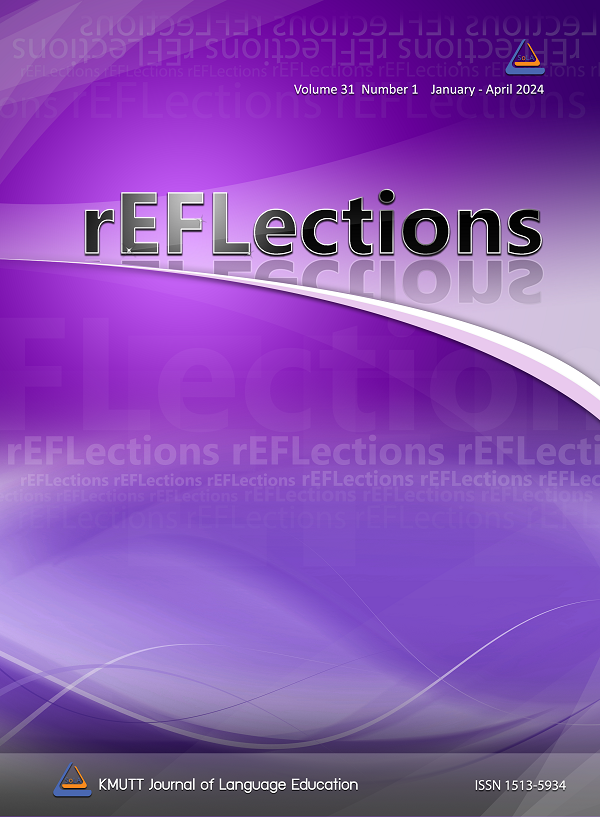Unstable Statives – An Observational Study: How British Popular Culture Reveals What is Happening to A Specific Verb Class, and the Possible Reasons for This Development
Main Article Content
Abstract
That a certain class of verb commonly known as ‘statives’ is undergoing change in terms of the way in which certain verbs of this type are being used in everyday speech is nothing new to the field of linguistics. Much has been written about it, and the author of this paper alone has been preoccupied with the subject for many years now. However, notwithstanding that this change has been fairly widely documented for well over half a century, the present paper has been motivated by the desire to capture the root cause of this change in writing and to establish the linguistic conditions that have enabled it to occur. This is not so much a reductionist venture, negatively conceived, as a quest to determine the primary factors involved in what can seem at times to be a most peculiar phenomenon. The method employed to delimit these causal factors proceeds by a process of elimination, while the provision of evidence adopts the traditional, tried-and-tested method of ‘observation and collection’. The stative-specific research papers that examine the current variation constituting the focus of this paper are all from the present century.
Article Details

This work is licensed under a Creative Commons Attribution-NonCommercial-NoDerivatives 4.0 International License.
References
Aitchison, J. (1998). The media are ruining English. In L. Bauer & P. Trudgill (Eds.), Language myths. Penguin.
Berg, T., Zingler, T., & Lohmann, A. (2020). The range of linguistic units: Distance effects in English mandative subjunctive constructions. Journal of Linguistics, 56(2), 231-268. https://doi.org/10.1017/S0022226719000124
British Council (2021, December 7). Stative verbs. Learn English. https://learnenglish.britishcouncil.org/grammar/intermediate-to-upper-intermediate/stative-verbs
Bybee, J. (2015). Language change. Cambridge University Press.
De Smet, H., & Fischer, O. (2017). The role of analogy in language change: Supporting con-structions. In M. Hundt, S. Mollin & S. E. P fenninger (Eds.), The changing English language: Psycholinguistic perspectives (pp. 240–268). Cambridge University Press. https://doi.org/10.1017/9781316091746.011
Elsen, H. (2006). Pseudomorpheme – fiktive Namen im Übergangsbereich von Phonologie und Morphologie. Muttersprache, 116(3), 242–248. Gesellschaft für deutsche Sprache.
Freund, N. (2016). Recent change in the use of stative verbs in the progressive form in British English: I’m loving it. University of Reading Language Studies Working Papers, 7, 50–61.
Givón, T. (1984). Syntax: A functional-typological introduction 1. John Benjamins.
Granath, S., & Wherrity, M. (2014). I’m loving you – and knowing it too: Aspect and so-called stative verbs. Language and Philology, 4(1), 2-22.
Greenbaum, S., & Quirk, R. (1990). A student’s grammar of the English language. Pearson.
Haugen, E. (1966). Dialect, nation, language. American Anthropologist, 68(4), 922–935. https://doi.org/10.1525/aa.1966.68.4.02a00040
Hickey, R. (2010). Language change. In J. Verschueren et al. (Eds.), Handbook of pragmatics: 2001 installment. John Benjamins.
Hopper, P. J. (1991). On some principles of grammaticalization. In E. C. Traugott & B. Heine (Eds.), Approaches to grammaticalization (Vol. 1, pp. 17–35). John Benjamins.
Hundt, M. (2009). Normverletzungen und neue normen. In M. Knopka & B. Streeker (Eds.), Deutsche grammatik – Regeln, normen, sprachgebrauch (pp. 117–140). De Gruyter.
Labov, W. (1966). The social stratification of English in New York city. Center for Applied Linguistics.
Labov, W. (1972). The social stratification of (r) in New York city department stores. In W. Labov (Ed.), Sociolinguistic patterns (pp. 43–54). University of Pennsylvania Press.
Leech, G., & Svartvik, J. (1994). A communicative grammar of English (2nd ed.). Longman.
Lukač, M. (2018). Grassroots prescriptivism: An analysis of individual speakers’ efforts at maintaining standard language ideology. English Today, 34(4), 5–12. https://doi.org/10.1017/S0266078418000342
Mair, C. (2012). Progressive and continuous aspect. In R. I. Binnick (Ed.), The Oxford handbook of tense and aspect. Oxford University Press. https://doi.org/10.1093/oxfordhb/9780195381979.001.0001
Milroy, J., & Milroy, L. (1999). Authority in language: Investigating standard English (3rd ed.). Routledge.
McKeown, S. (2009). Are you lovin’ it? Retrieved August 13, 2021, from https://www.macmillandictionaryblog.com/lovin-it.
New Oxford Dictionary of English (2001). New Oxford dictionary of English. Oxford University Press.
Rautionaho, P., & Fuchs, R. (2020). Recent change in stative progressives: A collostructional investigation of British English in 1994 and 2014. English Language and Linguistics, 25(1).
Roberts, I. (2007). Diachronic syntax. Oxford University Press.
Swan, M. (2005). Practical English usage (3rd ed.). Oxford University Press.
Thienthong, A. (2022). “It looks weird to me.”: Attitudes towards standard usage and variant use in present-day English. rEFLections, 29(3), 549–570.
Trask, R. L. (2000). The dictionary of historical and comparative linguistics. Edinburgh University Press.
Trask, R. L. (2010). Why do languages change? Cambridge University Press.
Van Lancker Sidtis, D. (2010). Formulaic and novel expressions in mind and brain: Empirical studies and a dual process model of language competence. In J. Guendouzi, F. Loncke & M. Williams (Eds.), The handbook of psycholinguistic and cognitive processes: Perspectives in communication disorders. Routledge. https://doi.org/10.4324/9780203848005.ch12


